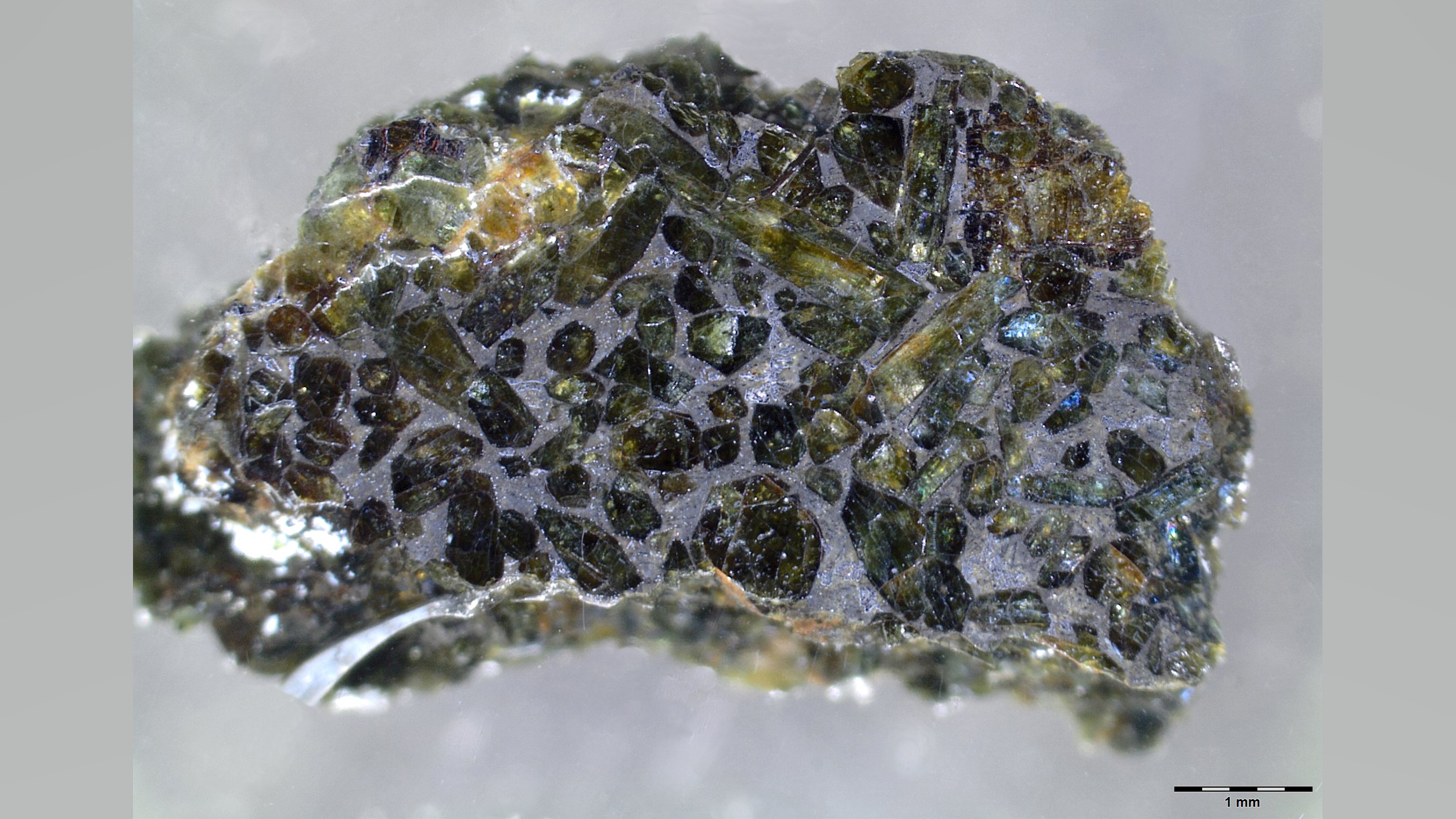Scientists peer inside a Mars meteorite to check for signs of a habitable world

Liquid water once shaped the rock inside a meteorite from Mars, but likely did not support any microbial life, a new study finds.
The rock is part of a class of meteorites known as nakhlites, which by birth are volcanic rocks that an asteroid impact blasted off Mars about 11 million years ago. Previous research has suggested that nakhlites might shed light on the Red Planet's ancient hydrothermal systems, and particularly its hot springs. Hot springs are an intriguing target because scientists think these environments may have been cradles for early life on Earth, so wonder whether the same holds true on Mars and beyond.
In the new study, researchers examined the Miller Range 03346 nakhlite, a 1.58-pound (715 grams) rock that scientists discovered in the Miller Range of mountains in Antarctica in 2003.
"From previous research, we know that minerals in this specific meteorite reacted with water about 630 million years ago," study lead author Josefin Martell, a planetary scientist at Lund University in Sweden, told Space.com.
Related: See a sunrise on Mars in this stunning view from NASA's InSight lander (photo)
But Martell and her colleagues wanted more detail about the rock's history. The scientists used non-destructive neutron and X-ray scans to estimate how much liquid water altered the rock's minerals, and therefore whether its former location on Mars hosted a hydrothermal system potentially capable of supporting life.
"I think it's really exciting that we can study meteorites without having to cut them open," Martell said. "We scanned our samples using X-rays and neutrons, and basically got a 3D image showing what our sample looked like on the inside."
Get the Space.com Newsletter
Breaking space news, the latest updates on rocket launches, skywatching events and more!
The scientists found that minerals within the meteorite that liquid water had altered were concentrated within isolated patches. This pattern suggests that the water responsible for altering these minerals did not leak into the rock from a hydrothermal system. Instead, the researchers argued that the water likely came from ice buried within the rock itself that melted during the impact that blasted the nakhlite off Mars.
These findings suggest that at the area where the nakhlite originated from, "the conditions were not fruitful for life to emerge or thrive," Martell said. However, these conclusions are "only for this time and place," and not for Mars as a whole, she cautioned. "For some, it might be tempting to draw conclusions about life on Mars in general. We only report what we see in our particular sample."
These findings suggest that neutron and X-ray scans may prove useful in analyzing rocks from other planets — "for example, when NASA brings back samples from Mars," Martell said. "Perseverance is right now drilling for samples that are expected to be brought back around 2030. When dealing with rare samples, you want to do as many non-destructive analyses as possible before cutting them."
The scientists detailed their findings in a paper published May 11 in the journal Science Advances.
Follow us on Twitter @Spacedotcom and on Facebook.
Join our Space Forums to keep talking space on the latest missions, night sky and more! And if you have a news tip, correction or comment, let us know at: community@space.com.

Charles Q. Choi is a contributing writer for Space.com and Live Science. He covers all things human origins and astronomy as well as physics, animals and general science topics. Charles has a Master of Arts degree from the University of Missouri-Columbia, School of Journalism and a Bachelor of Arts degree from the University of South Florida. Charles has visited every continent on Earth, drinking rancid yak butter tea in Lhasa, snorkeling with sea lions in the Galapagos and even climbing an iceberg in Antarctica. Visit him at http://www.sciwriter.us









